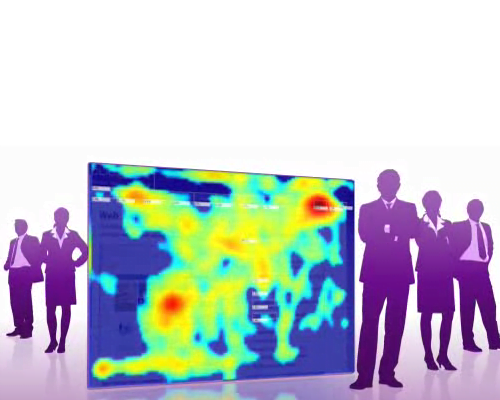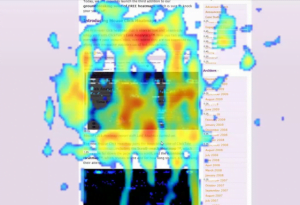ClickTale, an Israel-based company, enables website owners and designers to understand exactly what their users like and don’t like on their site, with a tracking solution that watches every move a user makes inside a webpage.
Websites can watch full videos of their users’ actions within their site, indicating where users move their mouse, where they click, what they type, when they scroll, and which error messages pop up.
Related Stories:
- Trendit: Mapping Population Movements Through Mobile Signals
- ‘Commerce Sciences’ Launches E-commerce Personalization Toolbar
Recordings show website’s weak spots
Using ClickTale, site owners are able to see at which point users left their site. They can also search these videos for specific problems; a site might have error messages, in which case ClickTale users can check to see if they led a user who tried to make a purchase to leave the site.
“You really get an understanding of what the customer does as if you’re sitting next to them while they’re browsing your website,” says ClickTale’s Senior Technology Evangelist, Shmuli Goldberg.
Heatmaps show the bigger picture
Recordings are not the only feature ClickTale offers. The tool can also present data collected from thousands of customers, using heatmaps generated from the recordings. In viewing a web page’s heatmap, the site owner can see which buttons get the most clicks, which images draw the most attention, which text was the most appealing to users. They can also see which parts of the website customers don’t find interesting enough to explore.
ClickTale gives its users information that is relevant to actual business performance and daily-generated revenue. Site owners can figure out which buttons or images make money. ClickTale employs link analytics to break down how much, in dollar value, a site is making on one image versus another, one button versus another, etc.
For example, take recordings from an Amazon product page and split them up between users who bought the product and users who didn’t. ClickTale can calculate and provide figures indicating, for instance, that 60 percent of users who purchased the product looked at one specific image, while 100 percent of users who didn’t purchase the product all read the same user review.
“What [we do] is to tie everything together. If I have a couple of recordings and I want to see a heatmap of them, or I have a specific form [on the site] and I want to see how many people drop out of one field in the form, I can do all that,” Goldberg added.
Addressing the issue of online privacy
Sign up for our free weekly newsletter
SubscribeGoldberg explained that from ClickTale’s point of view all data is anonymous. ClickTale does not hold on to IP addresses or personal information. It scrubs all recognizable data from user recordings, except for the user’s country and platform.
“The important thing to remember is our customers who use that information don’t necessarily want, or care, to know who you are. They want to know if 500 people look at this page, what’s the first image that grabs them. If 1000 people bought this product, what’s the last thing they saw before they bought it,” Goldberg tells NoCamels.
ClickTale mobile
But what happens when there is no keyboard or mouse that can serve for data analysis, as in mobile websites? Goldberg says there is a problem related to websites going mobile, since “it ignored the fact that a mobile phone didn’t have a keyboard, a mouse, and that it had a screen the size of your palm… There are text buttons you can’t push because your fingers are too big, and text is too small to read.”
To solve this problem ClickTale developed its own mobile integration, which was released in Beta version last month. ClickTale mobile allows its customers to track their mobile sites as they do on the computer, recording scroll rates and clicks.
“What we’re trying to do here is give the ability back to the web designers – to know the platform and then build for it. The way we tried to do that is by teaching the designers who the customer is, what the customer does and giving him the ability to understand how the website is used and then build the website for that platform.”
70,000 Customers
According to ClickTale, the company has about 70,000 customers, including one-man companies and bloggers. Approximately 2,500 of these users are high-paying customers that pay for advanced features, including companies like LinekdIn, GroupOn and Dell.
ClickTale says it has been generating revenue from the start by charging for their services. Their fee varies based on the customer’s site’s needs, starting from a free version and scaling up to companies which pay thousands of dollars for advanced features and functionality.
One round of investment from venture capital firm YL Ventures three years ago turned out to be all ClickTale needed as far as funding goes. “We were lucky that we got profitable very quickly. The product was good, the market was ready, so we were able to literally blow up and we are as we are today without any additional investment,” Goldberg concluded.
ClickTale was founded in 2006 and is headquartered in Ramat Gan, Israel.
Related posts

Editors’ & Readers’ Choice: 10 Favorite NoCamels Articles

Forward Facing: What Does The Future Hold For Israeli High-Tech?

Impact Innovation: Israeli Startups That Could Shape Our Future





Facebook comments